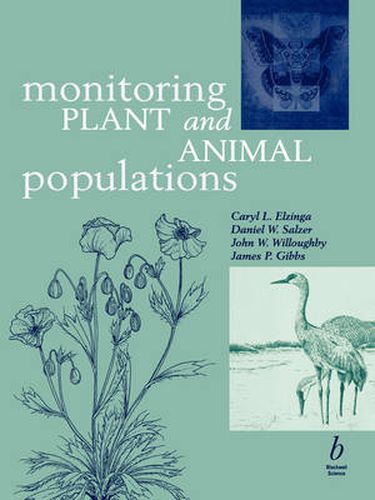Readings Newsletter
Become a Readings Member to make your shopping experience even easier.
Sign in or sign up for free!
You’re not far away from qualifying for FREE standard shipping within Australia
You’ve qualified for FREE standard shipping within Australia
The cart is loading…






Monitoring Plant and Animal Populations offers an overview of population monitoring issues that is accessible to the typical field biologist and land managers with a modest statistical background. The text includes concrete guidelines for ecologists to follow to design a statistically defensible monitoring program. * User–friendly, practical guide, written in a highly readable format. * The authors provide an interdisciplinary scope to address the current, widespread interest in monitoring in many environmental fields, including pure and applied ecology, conservation biology, and wildlife management. * Emphasizes the role of monitoring in adaptive management. * Defines important terminology and contrasts monitoring with other data–collection activities. Covers the applicable principles of sampling and shows how to design a monitoring project. * Provides a step–by–step overview of the monitoring process, illustrated by flow charts and references. The authors also offer guidelines for analyzing and interpreting monitoring data. * Illustrates the foundation of management objectives and describes their components, types, and development. * Describes common field techniques for measuring important attributes of animal and plant populations. * Reviews different methods for recording monitoring data in the field, managing the data, and communicating data to policy makers.
$9.00 standard shipping within Australia
FREE standard shipping within Australia for orders over $100.00
Express & International shipping calculated at checkout
Monitoring Plant and Animal Populations offers an overview of population monitoring issues that is accessible to the typical field biologist and land managers with a modest statistical background. The text includes concrete guidelines for ecologists to follow to design a statistically defensible monitoring program. * User–friendly, practical guide, written in a highly readable format. * The authors provide an interdisciplinary scope to address the current, widespread interest in monitoring in many environmental fields, including pure and applied ecology, conservation biology, and wildlife management. * Emphasizes the role of monitoring in adaptive management. * Defines important terminology and contrasts monitoring with other data–collection activities. Covers the applicable principles of sampling and shows how to design a monitoring project. * Provides a step–by–step overview of the monitoring process, illustrated by flow charts and references. The authors also offer guidelines for analyzing and interpreting monitoring data. * Illustrates the foundation of management objectives and describes their components, types, and development. * Describes common field techniques for measuring important attributes of animal and plant populations. * Reviews different methods for recording monitoring data in the field, managing the data, and communicating data to policy makers.